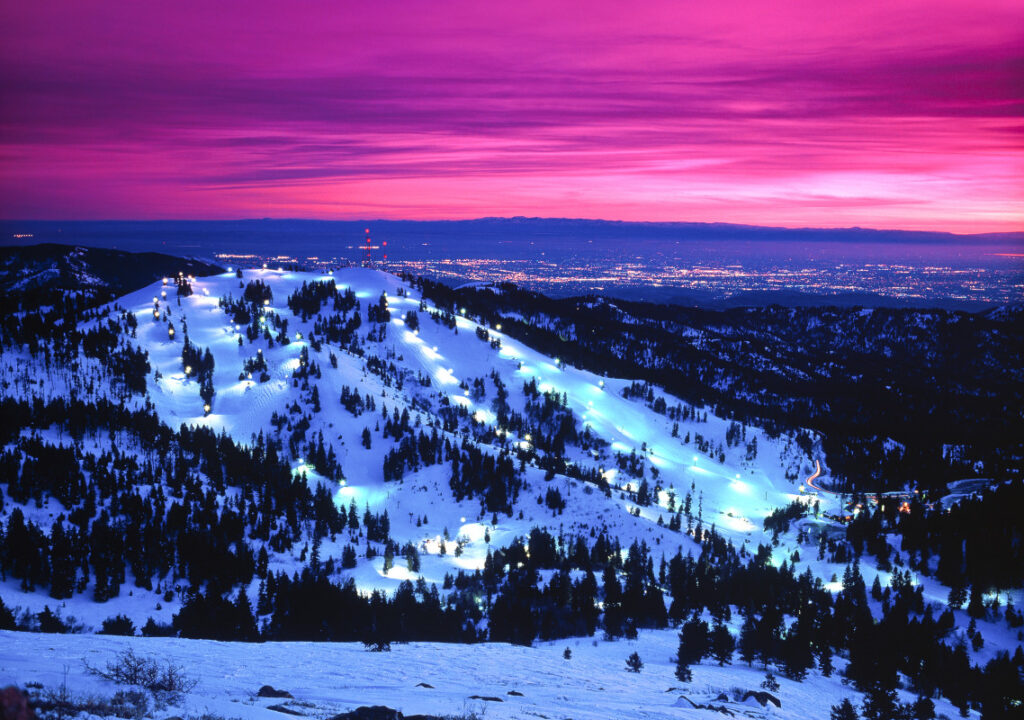Night laps are the working skier’s salvation. Picture this—after an onerous eight-hour workday, you throw on your ski gear, hop in the car, and hit the hill. After your first run, it dawns on you: I’m having fun, and it’s the middle of the work week. Thinner crowds and stellar views of darkened mountainscapes add to the allure. While everyone else is worrying about what to cook for dinner, you’re at your favorite ski area, laying tracks under the halogen lights.
But night skiing forces skiers to play by a different set of rules. The slopes are, of course, darker, and the air is colder, meaning a lack of adequate preparation can dampen the mood. As I’ve become a regular night skier this winter, I’ve learned a few things about best enjoying the slopes after dusk. These are some tips that’ll help you get the most out of your nighttime trip.
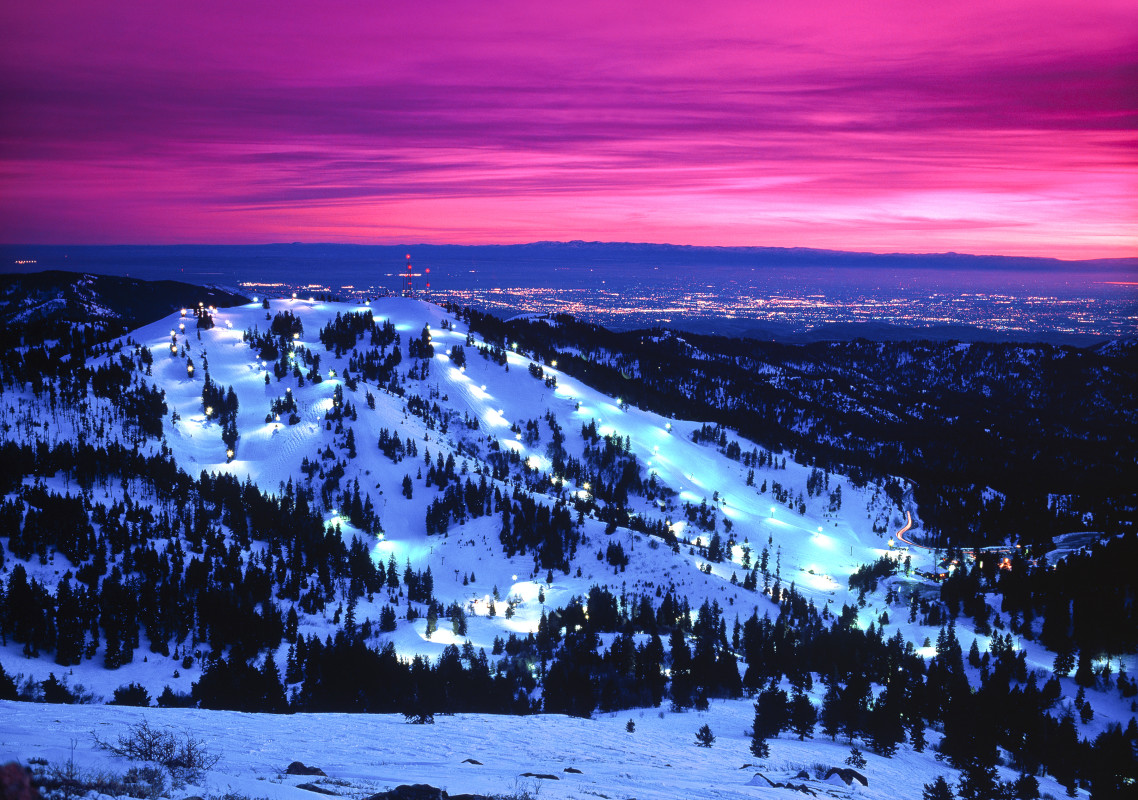
Photo: Steve Bly/Getty Images
1. Bring a Buddy
For safety—and entertainment—reasons, don’t go night skiing alone. Ski patrol, as always, has your back, but another layer of redundancy never hurts. It’s easier to get lost in the dark, but having a partner who’s ready to put a call out—and knows exactly where you were last skiing—eases those concerns. Plus, skiing with a crowd is, at least in my opinion, more fun. Nighttime powder stashes, like a blueberry pie or a pitcher of beer, taste better shared.
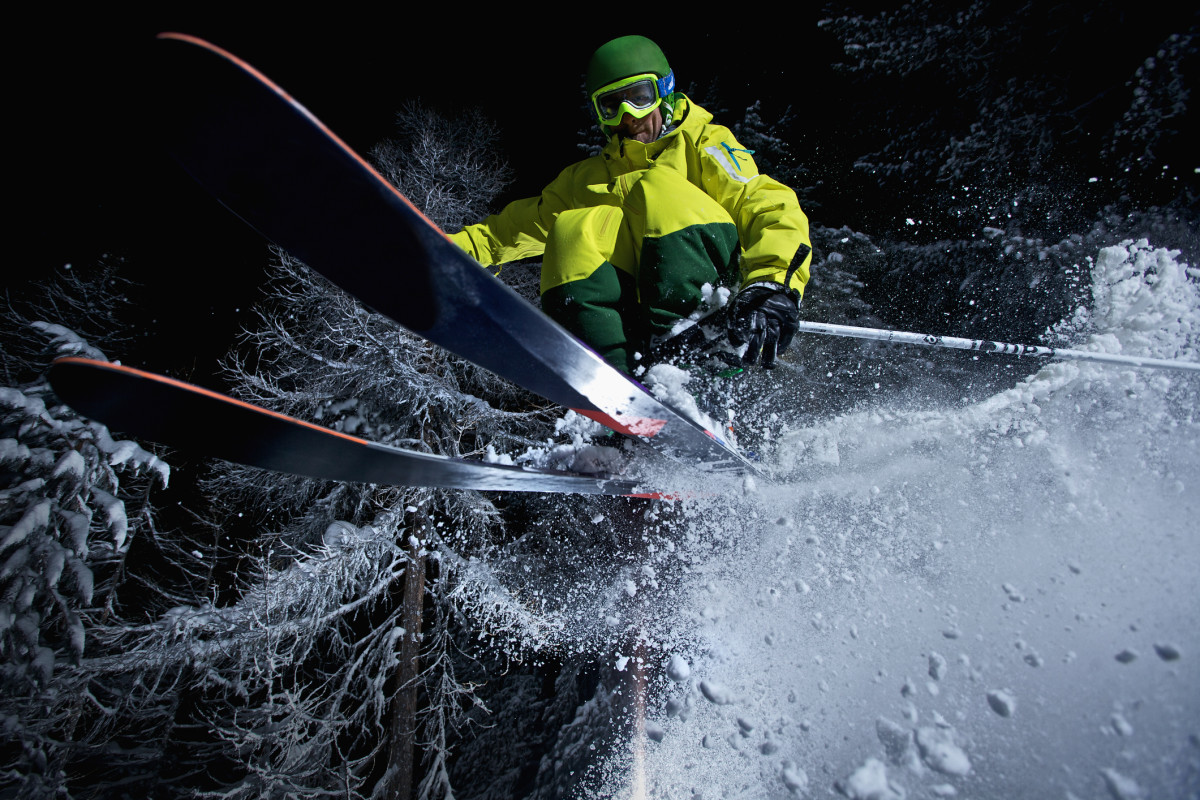
Photo: Christoph Jorda/Getty Images
2. Bring Clear Goggle Lenses
Even those lowlight, cloudy-day goggle lenses aren’t completely transparent. I learned this fact the hard way during my initial night skiing excursion. While the lenses I chose weren’t particularly dark—and would make your eyeballs fall out if worn in bright sunlight—they still obfuscated my vision at night.
I eventually opted to ski without goggles, which worked but wasn’t a great long-term solution. You can get away with the au naturel approach to skiing eyewear in some conditions, but if it starts snowing and the wind begins howling, you’ll end up having a bad time. Watery, snow-scorched eyes tend to ruin the fun of nighttime ski excursions.
What’s the solution? Opt for completely transparent lenses. Many goggle manufacturers sell interchangeable clear lenses that can be swapped in and out at your leisure. Should you be unable to find clear lenses that are compatible with your make and model of goggles, transparent safety glasses will suffice in a pinch.
Related: The 7 Best Resorts for Night Skiing in the United States

Photo: Powder Mountain
3. Wear Warm Layers
The night is colder than the day. That’s a truism, I know, but it makes even more sense when you step onto the slopes after dusk for the first time. Thirty degrees at night feels much chillier than 30 degrees during the day. Without warming bursts of sunlight, you’re stuck truly braving the elements. When packing before a nighttime slopeside trip, look at the forecast and then subtract ten degrees from the temperature readings—those are the weather conditions you should plan and be ready for. A down mid-layer could come in handy.
On a similar note—at night, heated gear of any kind is your friend. Hand and toe warmers are cheap and effective. More pricey options, like battery-powered socks, gloves, and vests, will cut through the cold even better.
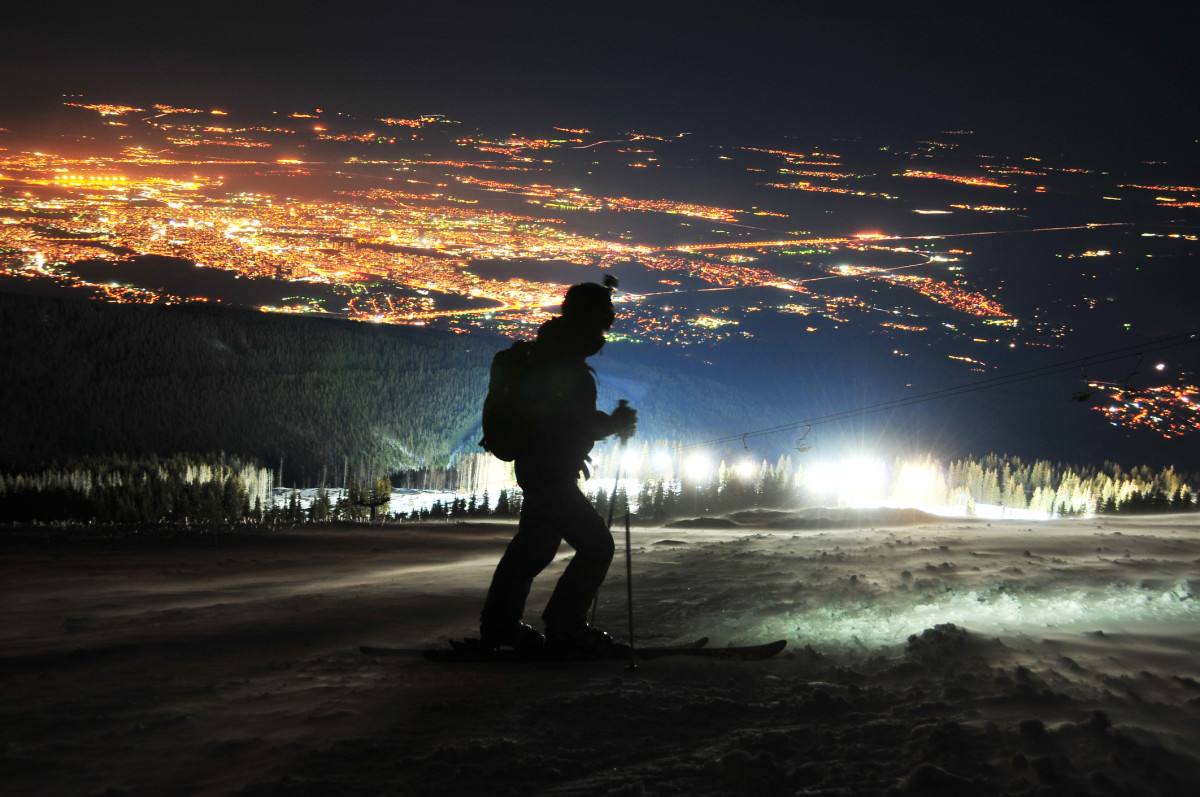
Photo: Maya Karkalicheva/Getty Images
4. Use a Headlamp
Thankfully, ski resorts that offer night skiing don’t skimp on the lighting. Most open runs will be well-lit with elaborate setups, making navigation easy (assuming, like me, you aren’t wearing goggles with lenses that are too dark). Still, headlamps are a worthwhile—but not necessary—accessory.
Part of night skiing’s magic is that you can dive off the main trails and schuss into the darker, quieter areas away from the lights. Experiencing the mountain in this way after dusk is totally unique and only made better if the skies are clear. Gazing upwards at a star-speckled sky as the snow and trees gleam below is—to get a bit woo-woo—spiritual. You’ll feel small but in a good way.
However, undergoing a little nighttime off-piste adventure requires that you have a headlamp on hand unless you’re fine skiing directly into a tree or creek. Another note—ski areas have different policies about what is and isn’t closed during night skiing. Make sure you review those policies before you ski into the dark so you don’t get your pass pulled or risk injuring yourself.
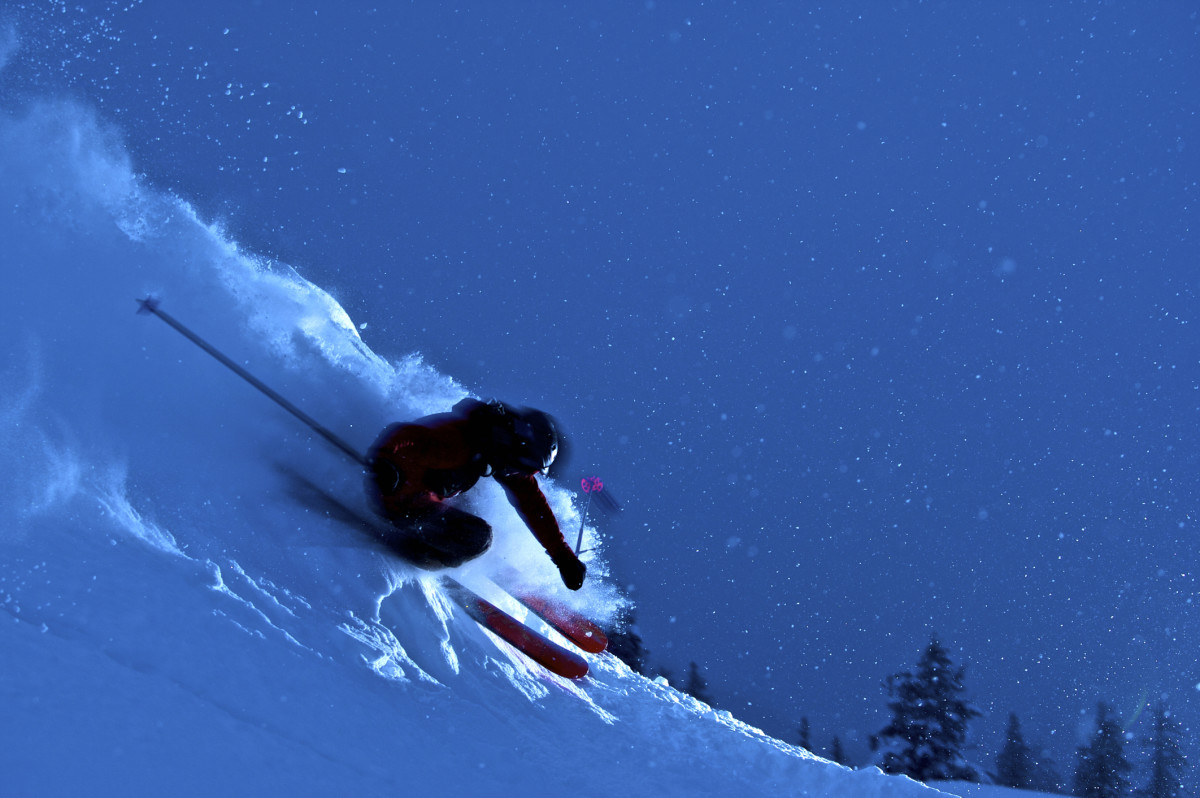
Photo: Derek DiLuzio/Getty Images
5. Keep Your Head on a Swivel
Even with headlamps, clear lenses, and light fixtures, seeing in the dark is still hard. Shadows of chairlifts can create the illusion that someone is skiing in your blind spot. Skiers dressed in all black might have looked like trees before, but suddenly, they’re blazing towards your downhill path. Night skiing requires more situational awareness than daytime fare. Ride slower than you normally would, and make ample use of shoulder checks. Avid skiers know snakes are more active at night.
Related: The 9 Best Ski Resorts for Intermediate Skiers in North America
6. Put a Thermos in Your Car
As the night winds down, and it comes time to return to your car turned ice-box, a thermos topped-up with your steaming liquid of choice helps temper the cold. It doesn’t really matter what you choose to put in the thermos. Hot chocolate, a hot toddy (if you have a designated driver), chili—these are all good options. What matters is knowing that, after spending a few hours sliding around in the brisk night air, a piping hot beverage or soup will accompany you on the way home.
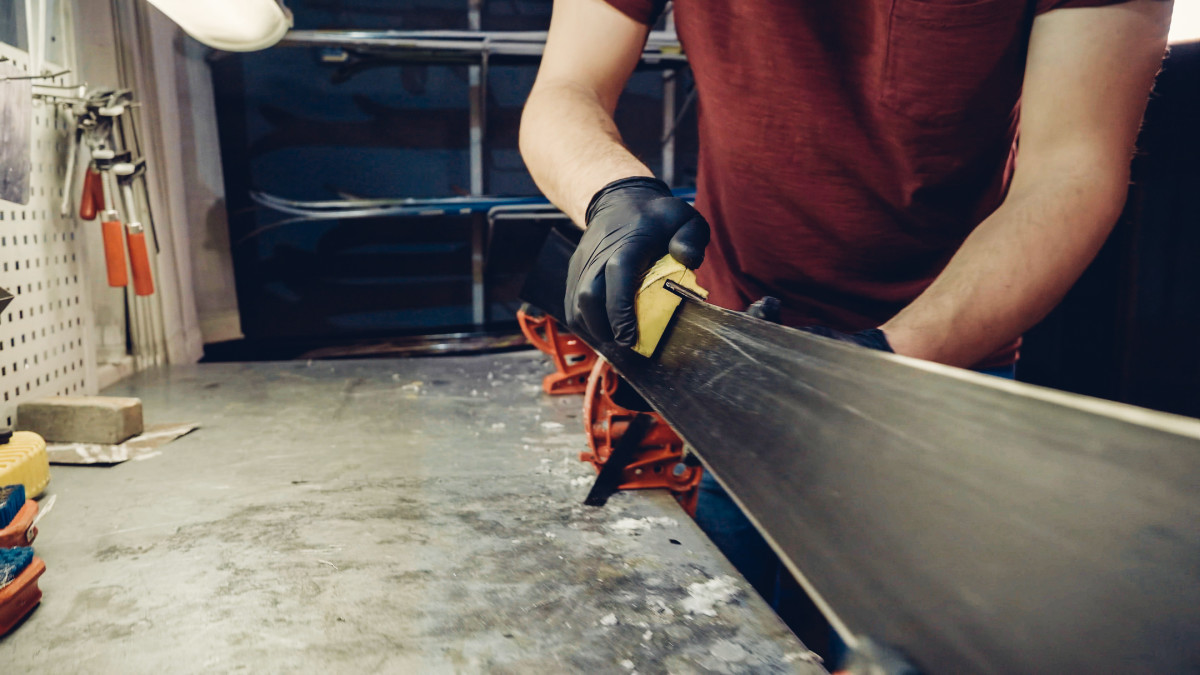
Photo: Yelizaveta Tomashevska/Getty Images
7. Consider Tuning Your Edges
In a perfect world, every day (and night) is a powder day. We, however, don’t live in a perfect world, and sometimes, the snow conditions are firm and icy. A lack of powder is only made worse at night as temperatures plummet. If you thought the snow was bulletproof during the day, it’ll be even more unpleasant in the evening. For this reason, consider giving your skis a fresh tune before a night skiing trip. The newly sharpened edges will provide better grip and cut deeper into the snow surface. Should powder be in the forecast, though, you can skip the tune.
Related: Ski Boot Problems? What Expert Bootfitters Want You To Know
Be the first to read breaking ski news with POWDER. Subscribe to our newsletter and stay connected with the latest happenings in the world of skiing. From ski resort news to profiles of the world’s best skiers, we are committed to keeping you informed.


